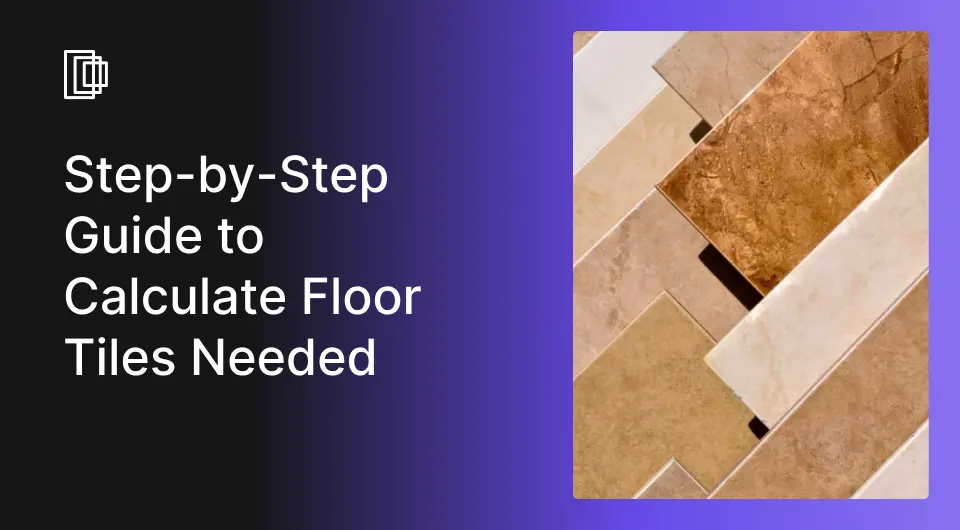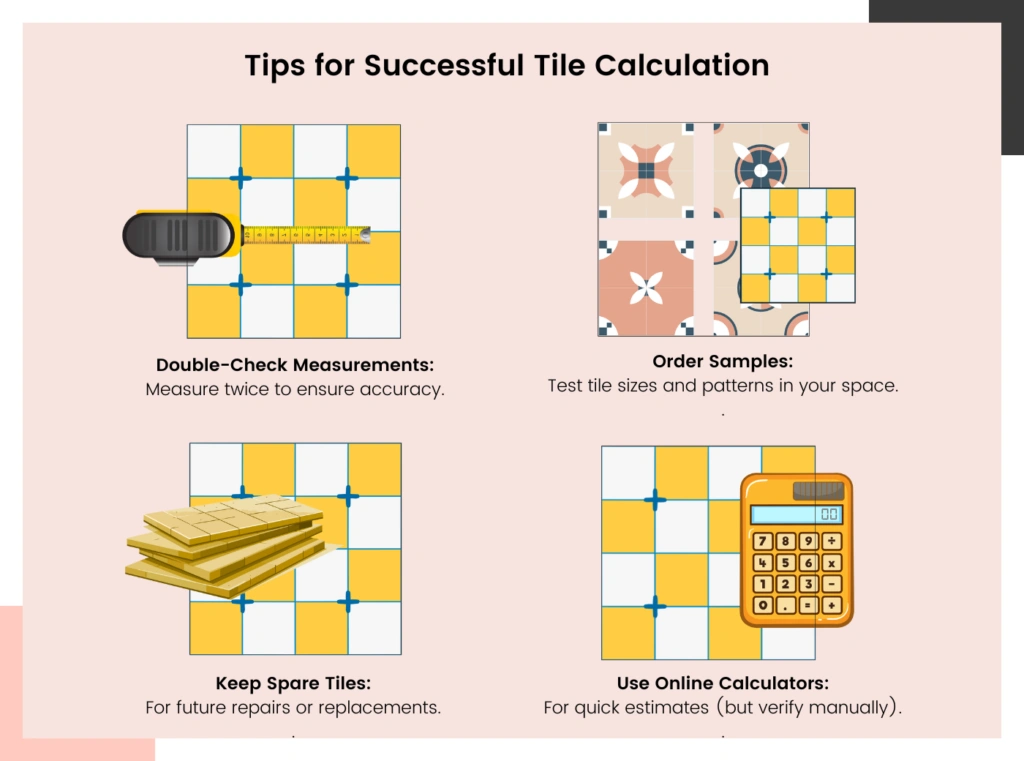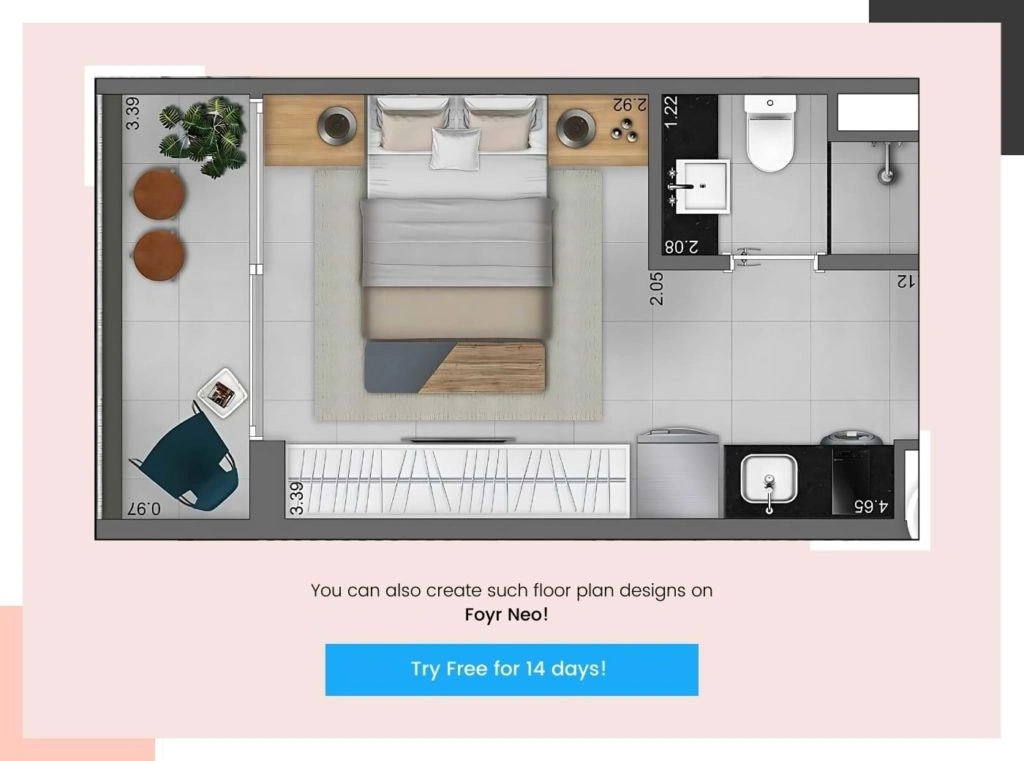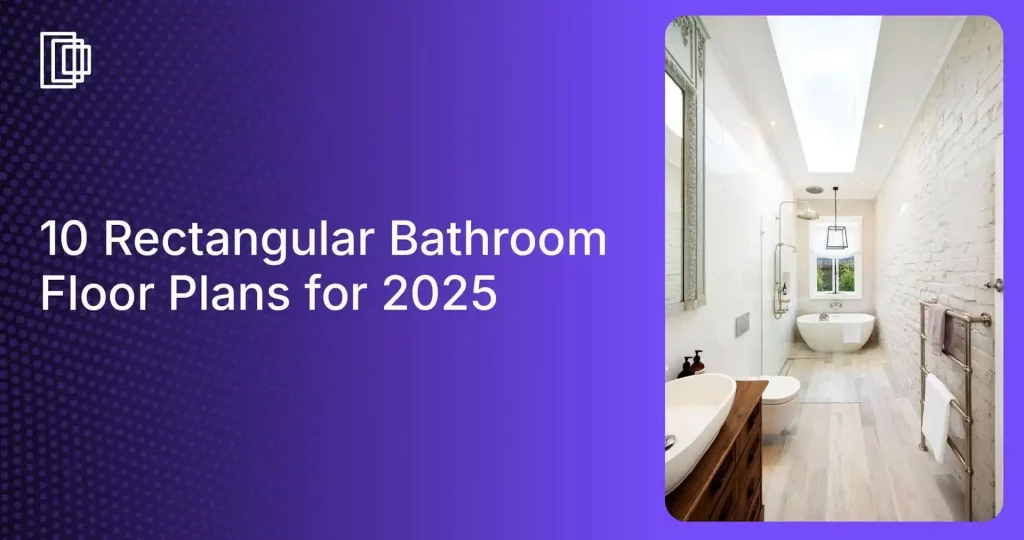Planning a tiling project can be exciting, but calculating the exact number of tiles you need can be a bit daunting. Whether you’re renovating your kitchen, bathroom, or any other space, this comprehensive guide will walk you through the steps to accurately determine how much tile you need for your room.
Why Accurate Tile Calculation Matters
- Cost Efficiency: Buying the right amount of tiles saves money.
- Time Saving: Avoid delays caused by running out of tiles.
- Consistency: Ensures the same batch of tiles for a uniform look.
Tools You’ll Need
- Measuring tape
- Calculator
- Notepad or spreadsheet
- Tile samples (optional)
Step-by-Step Guide to Calculating Floor Tiles
1. Measure the Room Dimensions
Rectangular or Square Rooms
- Length (L): Measure the longest side of the room.
- Width (W): Measure the shorter side of the room.
- Area (A): Multiply length by width.Area = Length × Width i.e. The area of a room is calculated by multiplying its length by its width.
Example: If your room is 10 feet long and 8 feet wide:
Area = 10 ft × 8 ft = 80 sq ft
So, the area of the room is 80 square feet.
Irregularly Shaped Rooms
- Divide the room into regular shapes: Rectangles or squares.
- Calculate the area of each section.
- Sum the areas to get the total area.
Example: For an L-shaped room:
- Section 1: 10 ft x 8 ft = 80 sq ft
- Section 2: 5 ft x 4 ft = 20 sq ft
- Total Area: 80 sq ft + 20 sq ft = 100 sq ft
2. Determine the Tile Size
Common tile sizes include:
- 12″ x 12″ (1 sq ft per tile)
- 18″ x 18″
- 12″ x 24″
- 6″ x 6″
3. Calculate Tiles Needed Without Waste
For Square or Rectangular Tiles
-
Tile Area (TA): Calculate the area of one tile.
Tile Area = Tile Length × Tile Width - Number of Tiles (NT): To find how many tiles you need to cover the room, use the formula:
Number of Tiles= Total Room Area/Tile Area
In simple terms, divide the total room area by the area of one tile to get the number of tiles.
Example:
- Tile size: 12″ x 12″ (1 sq ft)
- Total Room Area: 100 sq ft
Number of Tiles:
NT = 100sq ft/1sq ft = 100 tiles
So, you will need 100 tiles to cover the room.
4. Account for Waste and Breakage
- Add 10% Extra: For standard layouts.
- Add 15% Extra: For diagonal or intricate patterns.
Calculation:
Total Tiles Needed = Number of Tiles × (1 + Waste Percentage)
Example:
- Standard layout: 100 tiles
- Waste percentage: 10% (or 0.10)
- Total Tiles Needed = 100 × 1.10 = 110 tiles
So, you will need 110 tiles, including 10% extra for waste.
5. Consider Grout Lines
- Standard Grout Width: Usually 1/8″ to 1/4″.
- Effect on Calculation: Minimal but can slightly reduce the number of tiles needed.
6. Final Calculation Summary
- Measure total area in square feet.
- Determine tile area.
- Calculate number of tiles without waste.
- Add extra tiles for waste (10-15%).
- Round up to the nearest whole number.
Quick Reference Table
| Tile Size (inches) | Tile Area (sq ft) | Tiles per 100 sq ft (without waste) |
| 12 x 12 | 1 | 100 |
| 18 x 18 | 2.25 | 45 |
| 12 x 24 | 2 | 50 |
| 6 x 6 | 0.25 | 400 |
Remember to add extra tiles for waste.
Additional Considerations
Tiles with Patterns or Designs
- Matching Patterns: May require more tiles.
- Recommendation: Add 5% more to the waste percentage.
Room Features
- Obstacles: Islands, cabinets, or fixtures reduce the area.
- Calculate Subtracting Areas:
To calculate the adjusted area when you have obstacles (like furniture or columns) in the room:Adjusted Area = Total Room Area − Area of Obstacles
This gives you the usable area of the room after subtracting the space taken up by obstacles.
Professional Installation
- Consult a Professional: For complex layouts or high-end materials.
- Installers May Require Extra Tiles: For cuts and mistakes.
Example Calculation
Scenario: You have a rectangular kitchen floor to tile.
- Room Dimensions: 15 ft × 12 ft = 180 sq ft
- Tile Size: 12″ × 12″ (1 sq ft per tile)
- Obstacle (Kitchen island): 4 ft × 3 ft = 12 sq ftAdjusted Area Calculation = 180 sq ft − 12 sq ft = 168 sq ft
Number of Tiles Needed =168 sq ft/1 sq ft per tile = 168 tiles
Including 10% Waste:Total Tiles = 168 × 1.10 = 184.8
Total Tiles to Purchase: 185 tiles (rounded up).
Tips for Successful Tile Calculation
- Double-Check Measurements: Measure twice to ensure accuracy.
- Order Samples: Test tile sizes and patterns in your space.
- Keep Spare Tiles: For future repairs or replacements.
- Use Online Calculators: For quick estimates (but verify manually).
Common Mistakes to Avoid
- Not Accounting for Waste: Leads to shortages.
- Ignoring Obstacles: Overestimates tile needs.
- Forgetting Grout Lines: Can affect tile count slightly.
- Assuming All Tiles Are Perfect: Some may be damaged or flawed.
Conclusion
Calculating the number of floor tiles you need doesn’t have to be complicated. By following these steps and considering all factors, you can accurately determine how much tile to purchase for your project. Using tools like Foyr can simplify the planning process, ensuring a smooth installation and a beautifully finished floor.
FAQs
How many square feet does a box of tiles cover?
Varies by Manufacturer: Check the packaging.
Common Coverage: Often between 10-15 sq ft per box.
Should I buy extra tiles?
Yes, always purchase extra (10-15%) for waste and future repairs.
Can I return unused tiles?
It depends on the supplier. Many accept returns of full boxes, but policies vary.
How do I calculate tiles for a diagonal layout?
Increase Waste Percentage: Use at least 15% extra due to more cuts and waste.
What is the formula for calculating floor tiles?
The basic floor tiles calculation formula is:
Room Area ÷ Tile Area = Number of Tiles.
Always add 10–15% extra for waste. Using Foyr makes it easier to calculate the number of floor tiles needed.
How do I know how much floor tile I need?
To know how much floor tile you need, measure the total floor area, divide by tile size, and add 10–15% for waste. Tools like Foyr simplify the process of calculating the tiles needed for a floor.
What is the 1/3 rule for tile?
The 1/3 rule recommends staggering tile joints by one-third of the tile’s length rather than halfway. This approach reduces lippage, improves alignment, and enhances floor aesthetics, especially when applying basic interior design principles to flooring layouts.
How many 12×12 tiles for 100 sq ft?
You will need a minimum of 100 tiles, as one 12×12-inch tile covers exactly one square foot. However, you should purchase about 110-115 tiles to account for cuts and waste (10-15% overage).
Which type of tiles are best for flooring?
The best tile depends on the room. Porcelain is highly durable and water-resistant, making it ideal for bathrooms and kitchens. Ceramic offers more design options, while natural stone provides a luxury look. Luxury Vinyl Tile (LVT) is excellent for high-traffic areas.
How to calculate floor area?
For a rectangular room, calculate the floor area by multiplying its length by its width. For an L-shaped space, divide it into two rectangles, calculate each area separately, and then add them together. This is the first step to calculate the number of floor tiles needed for any room.












